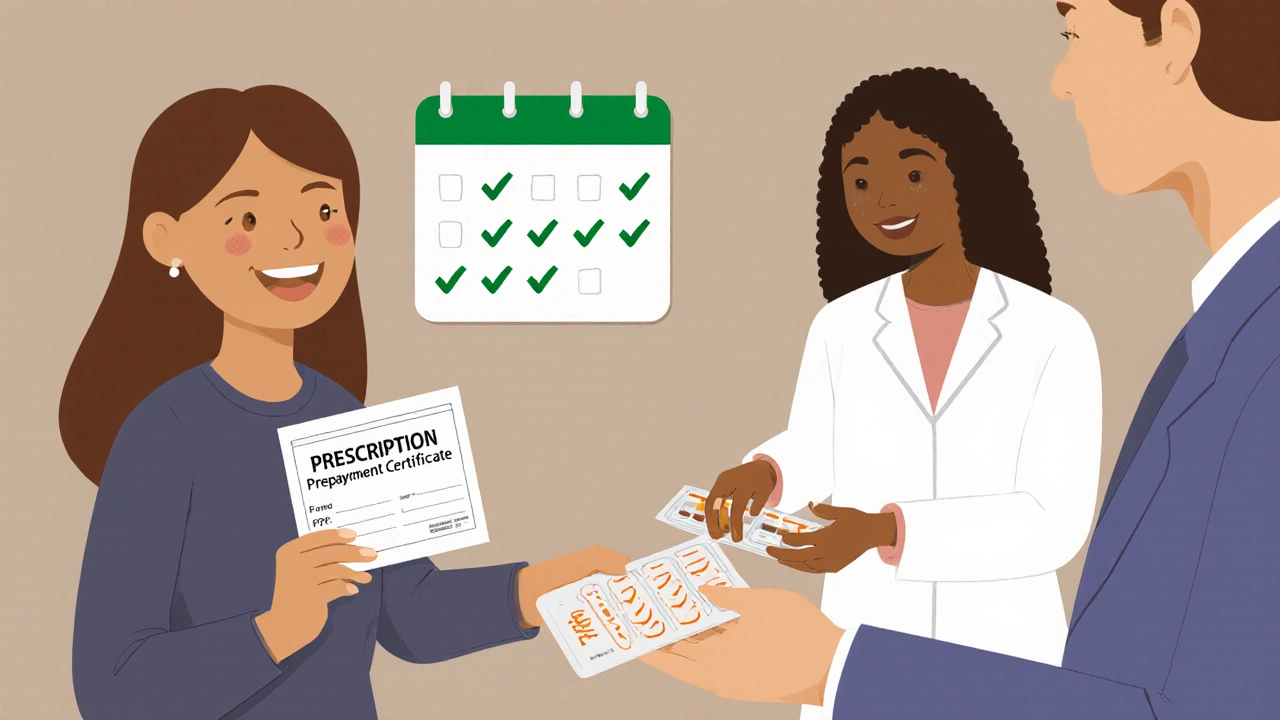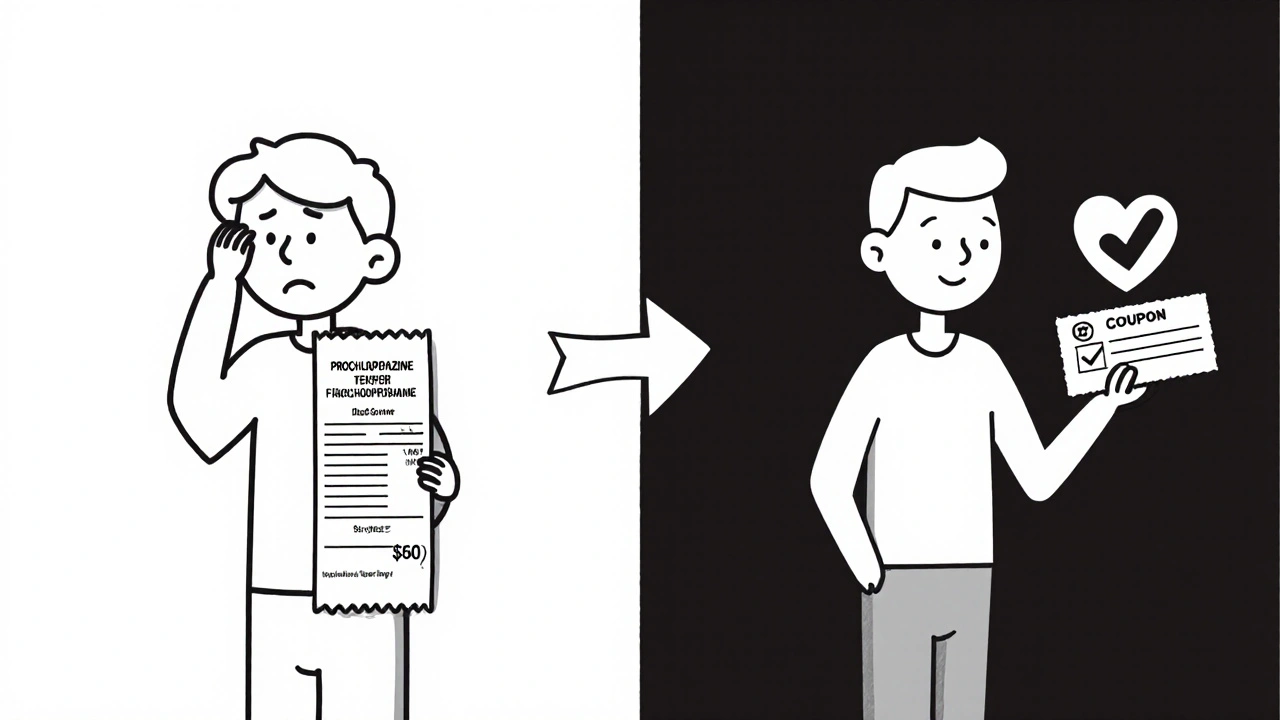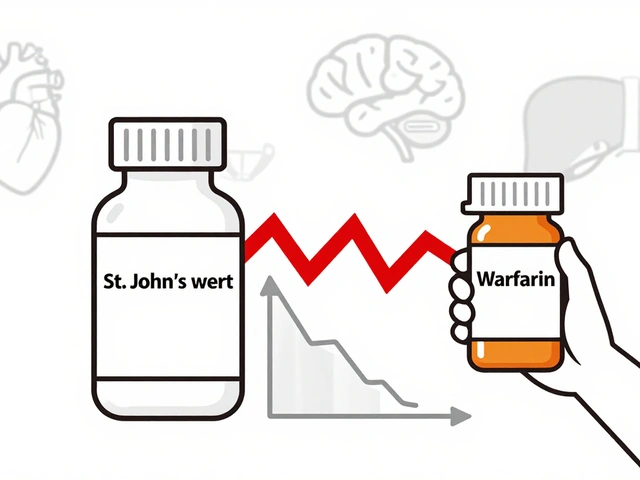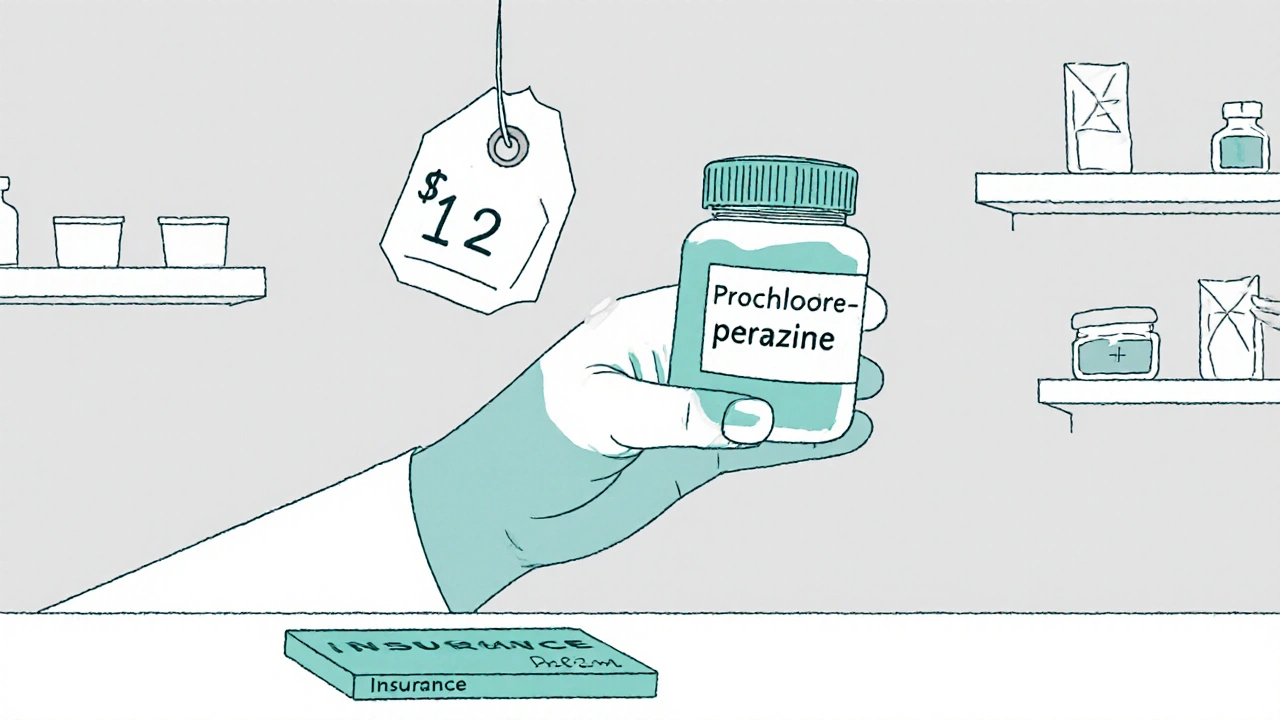Prochlorperazine isn’t a drug you hear about every day-unless you’re dealing with severe nausea, migraines, or vertigo. Then it becomes one of the first names on your pharmacist’s list. But here’s the real question: how much does it actually cost? And more importantly, will your insurance cover it, or are you stuck paying full price at the counter?
What Prochlorperazine Is and Why It’s Used
Prochlorperazine is an antipsychotic medication, but it’s rarely used for psychosis these days. Instead, it’s most commonly prescribed as an antiemetic-meaning it stops nausea and vomiting. It’s also used for severe migraines when other treatments fail, and sometimes for vertigo caused by inner ear problems. It comes in tablets, suppositories, and injections, with the tablet form being the most common for home use.
It works by blocking dopamine receptors in the brain’s vomiting center. That’s why it’s so effective when you’re feeling sick to your stomach after chemotherapy, surgery, or even food poisoning. It’s not a cure, but it gives you back control when your body won’t cooperate.
Typical Costs Without Insurance
If you’re paying out of pocket, the price of prochlorperazine can vary wildly depending on where you live and which pharmacy you use. In the UK, a 30-tablet pack of 5mg prochlorperazine typically costs between £5 and £12 at a community pharmacy. That’s for the generic version-brand names like Compazine are no longer sold here, so you’re only getting the generic.
In the US, prices are higher. Without insurance, a 30-tablet supply of 5mg prochlorperazine can run anywhere from $20 to $60. Some online pharmacies offer it for as low as $12 if you use a coupon, but those aren’t always accepted at local pharmacies. The price doesn’t change much based on dosage-5mg and 10mg tablets cost about the same per pill.
Compare that to newer anti-nausea drugs like ondansetron (Zofran), which can cost over $100 without insurance. Prochlorperazine is one of the cheapest options available for severe nausea, which is why doctors still reach for it.
How Insurance Covers Prochlorperazine
Most insurance plans in the UK and the US cover prochlorperazine because it’s on the WHO’s List of Essential Medicines and considered a low-cost, high-impact drug. In the UK, it’s available free at the point of use through the NHS if you have a prescription-unless you’re in a group that pays prescription charges, like adults in England who don’t qualify for exemptions.
In the US, prochlorperazine is almost always on Tier 1 of formularies-the lowest cost tier. That means your copay might be as low as $5 to $10 for a 30-day supply. Some Medicare Part D plans even list it as a preferred generic with no deductible.
But coverage isn’t guaranteed. Some insurers require prior authorization if you’re taking it long-term, especially if you’re on high doses or using it for migraines instead of nausea. Others might limit you to a 10-day supply unless your doctor explains why you need more.

What If Your Insurance Denies Coverage?
If your claim gets denied, don’t assume you’re out of options. The first step is to ask your doctor to file an appeal. They’ll need to write a letter explaining why prochlorperazine is medically necessary-especially if you’ve tried other drugs that didn’t work or caused side effects.
Many patients don’t realize that pharmacies can often help too. Ask your pharmacist to check if the insurer has a preferred mail-order pharmacy that offers it cheaper. Some plans give you a discount if you order a 90-day supply through their mail service.
Also, check out patient assistance programs. Organizations like the Patient Access Network Foundation (PAN) and NeedyMeds offer grants for low-income patients who need medications like prochlorperazine. You don’t need to be on Medicaid-many programs accept people with private insurance who still can’t afford their copay.
Generic vs. Brand: Is There a Difference?
There’s no brand-name prochlorperazine left on the market in the UK or US. All versions are generic, and they’re all required to meet the same strict standards set by the MHRA in the UK and the FDA in the US. That means the active ingredient, dosage, and absorption rate are identical across manufacturers.
Some people swear one generic works better than another. That’s usually not because the drug is different-it’s because fillers or coatings vary slightly between brands. If you notice a change in how you feel after switching pharmacies, talk to your doctor. They can request a specific manufacturer if needed, though most won’t bother unless you’re having real issues.
Where to Get the Best Price
Here’s how to save money on prochlorperazine, no matter where you live:
- In the UK: If you pay prescription charges, get a Prescription Prepayment Certificate (PPC). A three-month PPC costs £31.25 and covers unlimited prescriptions. If you need prochlorperazine monthly, that’s cheaper than paying £9.65 per script.
- In the US: Use GoodRx or SingleCare coupons. You can often get 30 tablets for under $10 at Walmart, CVS, or Walgreens.
- Both countries: Ask if your pharmacy offers a discount for paying cash instead of using insurance. Sometimes the cash price is lower than your insurance copay.
- Online pharmacies: Only use those registered with the General Pharmaceutical Council (GPhC) in the UK or the National Association of Boards of Pharmacy (NABP) in the US. Avoid sites that don’t require a prescription.

Side Effects and When to Switch
Prochlorperazine works well-but it’s not without risks. Common side effects include drowsiness, dry mouth, and dizziness. More serious ones include muscle stiffness, tremors, or uncontrollable movements (dystonia), especially in younger people. If you experience any of those, stop taking it and call your doctor right away.
It’s also not safe for everyone. People with liver disease, low blood pressure, or certain heart conditions should avoid it. It can interact with antidepressants, antifungals, and even some antibiotics. Always tell your pharmacist about every other medication you take.
If side effects are too much, your doctor might switch you to metoclopramide or ondansetron. But those are usually more expensive. Prochlorperazine remains the go-to because it’s cheap, effective, and has been used safely for over 60 years.
Real-World Example: A Patient’s Story
Sarah, 42, from Bristol, gets migraines twice a month. Her neurologist prescribed prochlorperazine after she couldn’t tolerate sumatriptan. She was worried about the cost-she’s on a tight budget and doesn’t qualify for free prescriptions in England.
She paid £9.65 per script at first. Then she found out about the PPC. She bought a three-month certificate for £31.25. Now, every time she needs it, she walks into the pharmacy and gets it free. That’s over £90 saved in three months. She says it’s one of the smartest health decisions she’s ever made.
Final Thoughts: Is It Worth It?
Prochlorperazine isn’t glamorous. It doesn’t have flashy ads or celebrity endorsements. But it’s one of the most reliable, affordable drugs for stopping nausea and vomiting. For many people, it’s the difference between staying in bed and getting through the day.
If you’re paying full price, you’re likely overpaying. Insurance usually covers it. Even if it doesn’t, coupons and programs exist to help. Don’t let cost stop you from getting the relief you need.
Ask your doctor if prochlorperazine is right for you. Ask your pharmacist how to get it cheapest. And don’t assume it’s too expensive-because more often than not, it’s not.
Is prochlorperazine available for free on the NHS?
Yes, prochlorperazine is available for free on the NHS in England if you qualify for free prescriptions-such as if you’re under 16, over 60, pregnant, or have a medical exemption. In Scotland, Wales, and Northern Ireland, all prescriptions are free regardless of income. In England, if you pay for prescriptions, you can save money by buying a Prescription Prepayment Certificate (PPC), which covers all your prescriptions for 3 or 12 months.
Can I buy prochlorperazine without a prescription?
No. Prochlorperazine is a prescription-only medicine in the UK and the US. It’s not available over the counter because it carries risks like movement disorders and low blood pressure. Even online pharmacies that claim to sell it without a prescription are operating illegally and may sell counterfeit or unsafe products. Always get it through a licensed pharmacy with a valid prescription.
How long does it take for prochlorperazine to work?
When taken as a tablet, prochlorperazine usually starts working within 30 to 60 minutes. For severe nausea or vomiting, you should feel relief within an hour. If you’re using suppositories, it may take slightly longer-about 1 to 2 hours. Injections, which are given in hospitals, work in under 15 minutes.
Does prochlorperazine cause weight gain?
Weight gain is not a common side effect of prochlorperazine, unlike some other antipsychotics. However, because it can cause drowsiness and reduce activity levels, some people may become less active over time, which can lead to gradual weight gain. If you notice unexplained weight gain, talk to your doctor-it could be a sign of another issue or interaction with another medication.
Can I drink alcohol while taking prochlorperazine?
No. Alcohol can increase the sedative effects of prochlorperazine, making you extremely drowsy, dizzy, or unsteady. It can also lower your blood pressure dangerously. Even a small amount of alcohol can make side effects worse. Avoid alcohol completely while taking this medication, and for at least 24 hours after your last dose.




Comments
9 Comments
Vishwajeet Gade
Prochlorperazine? Bro its literally 5 bucks at Walmart with a coupon. Why you guys actin like its rocket science? 🤡
Casey Crowell
I used to get migraines so bad I’d cry in the grocery store. Prochlorperazine saved my life. Not glamorous, not trendy, but it works. 💙
And yeah, the NHS thing? That’s why I moved to Canada. No one should choose between food and medicine.
Shanna Talley
If you’re paying full price for this, you’re doing it wrong. Seriously. GoodRx, cash pay, PPC-there are so many ways to get it cheap. You just gotta ask.
And if you’re scared of side effects? Talk to your pharmacist. They’re the real MVPs. 🌱
Samuel Wood
Honestly, the fact that this drug is still in use speaks to the pathetic state of modern pharmacology. We have AI-driven neuropharmaceuticals in development, yet we’re still prescribing a 1950s dopamine antagonist like it’s a miracle cure. How quaint.
ridar aeen
I had dystonia from this once. Took me 3 weeks to stop shaking. My doctor just shrugged. ‘It’s cheap, so it’s fine.’ No. It’s not fine. If it’s dangerous, it’s dangerous. Period.
chantall meyer
Americans always act like they’re suffering because they pay $20 for a pill. In South Africa, we pay $100 for nothing. At least you have options. Stop complaining and get a PPC.
Lorne Wellington
Just wanna say-this post is a gift. 🙏
Prochlorperazine is the unsung hero of emergency rooms and migraine sufferers. It’s not sexy, but it’s honest. And if you’re using it for vertigo? You’re doing it right.
Also, never mix it with alcohol. I learned that the hard way. 🤢
Anthony Griek
I’m from the UK and got this for free through NHS. But my cousin in Texas paid $58 for the same pills. That’s not healthcare. That’s a scam. We need universal coverage. Simple.
Norman Rexford
Prochlorperazine? That’s what my grandpa took back in ‘78. Still works. Funny how the old stuff always beats the new flashy crap. Pharma just wants you to buy $120 Zofran so they can buy another yacht. 🚤
Write a comment